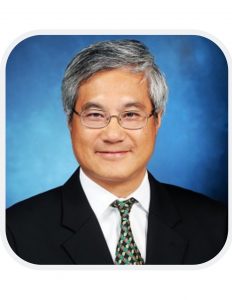Japan, with a population of 123 million, is the world’s 11th most populous nation and is actively relaxing regulations surrounding the importation of skilled labour to address gaps caused by its shrinking workforce. However, Japan is not alone in facing these demographic challenges. Other Asia-Pacific economies, including South Korea, Hong Kong, and China, are also grappling with an aging population. In this context, Japan’s approach could serve as a model for neighbouring countries, offering a potential solution to workforce shortages while enhancing living standards across Southeast Asia.
Expanded Scheme, New Hope
The recent reform in Japan stems from a series of amendments to its specialised worker visa programme. Earlier this year, the Japanese government moved to expand the Specified Skilled Worker programme, extending it to four additional industries—automotive transportation, railroads, forestry, and timber—sectors facing significant labour shortages. This expansion reflects Japan’s urgent need for foreign workers to fill critical gaps in its workforce.
In parallel, Japan also enacted revised legislation to replace the controversial foreign trainee program, allowing foreign workers to stay longer in the country as part of efforts to mitigate labour shortages in an aging society.
The expansion of Japan’s skilled labour programme has been met with support from ASEAN countries, particularly Indonesia. The Indonesian government has set an ambitious target of exporting 100,000 workers to Japan by 2027. In line with this goal, the Japan International Cooperation Agency (JICA) and Indonesia’s Ministry of Manpower co-hosted the first Human Resources Forum in Jakarta in November 2023, underscoring their commitment to fostering labour migration between the two nations.
Incentive to Change
These reforms mark a significant shift in Japan's immigration policy towards skilled workers, as the country begins to integrate incoming labour into its long-term residency framework. ASEAN nations, in particular, stand to benefit most from Japan’s labour migration policy changes. According to a recent report, workers from countries such as Vietnam and the Philippines represent the largest group of foreign workers, totalling close to 750 thousand and accounting for nearly 37% of the foreign workforce.
However, despite Japan’s growing openness to international labour, scepticism is rising among Southeast Asian workers about relocating to the country. Concerns over the weakening yen and the challenges posed by Japan’s traditional working culture, which may not align with the expectations of incoming workers, have contributed to this shift. This trend has presented an opportunity for neighbouring countries such as South Korea, China, and Singapore to reassess their labour migration policies, potentially easing restrictions to address their own workforce shortages.
In China, for example, labour shortages have become a critical issue, exacerbated by the country’s aging population, which could negatively impact productivity. The Ministry of Human Resources and Social Security of China projected a labour shortage of 30 million people in 2025 in major manufacturing industries like automobiles. Other than demographic factors, the education gap is another issue that may lead the country in rethinking its labour migration policy. According to some reports, only three million domestic migrant workers out of 291 million took a vocational and technical program in 2019, reflecting a rural-urban struggle regarding education on skilled workers in China.
Transnational solutions
In addressing such challenges, countries must consider transitional solutions, such as importing skilled labour from nations with well-established workforces. Japan’s experience – having one of the strictest labour importation policies – may offer valuable lessons for other countries adapting to a globalised labour market. The introduction of the Specified Skilled Worker programme in 2019 illustrates how a country can identify specific occupations eligible for visa consideration and expand the programme based on evolving regional needs. Furthermore, a trial phase for specialised worker programmes could allow governments to assess the programme's impact before committing to broader implementation.
The transfer of skilled labour can have several positive effects on the receiving country. First, it can significantly boost economic productivity by filling critical gaps in sectors facing labour shortages, thus ensuring industries maintain or increase their output. This increased workforce capacity can support economic growth and competitiveness, particularly in industries like manufacturing, technology, and healthcare.
Second, importing skilled workers helps bridge the gap in specific skill sets, enhancing innovation and technological progress. These professionals often bring new expertise and perspectives that can lead to the adoption of advanced technologies, improved work practices, and heightened efficiency across sectors, contributing to long-term economic development.
Finally, the influx of skilled workers from diverse backgrounds can foster cultural and social enrichment. A multicultural workforce encourages cross-cultural exchange, which can stimulate creativity and innovation, enhance problem-solving, and cultivate a more adaptable and resilient labour force. This cultural diversity can also enhance the country’s global appeal, making it an attractive destination for international business and investment.
As such, the strategic importation of skilled labour presents a critical solution for countries grappling with workforce shortages and demographic shifts. By drawing on Japan's experience with evolving immigration policies, nations can develop tailored labour migration frameworks that address both immediate needs and long-term economic objectives.
These initiatives not only help bridge skills gaps but also drive productivity, innovation, and competitiveness on a global scale. As the global labour market continues to evolve, embracing such policies will be essential for countries to maintain their economic edge and foster sustainable growth while enriching their social and professional landscapes.


























